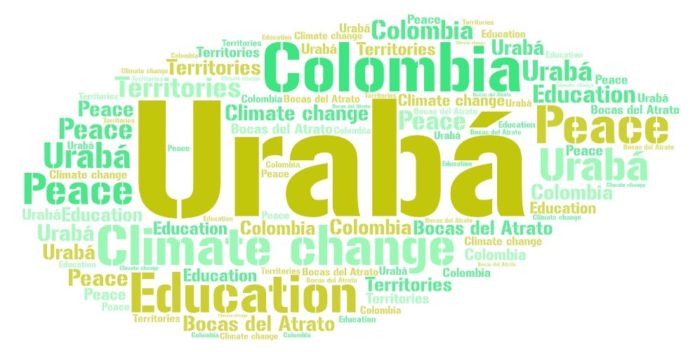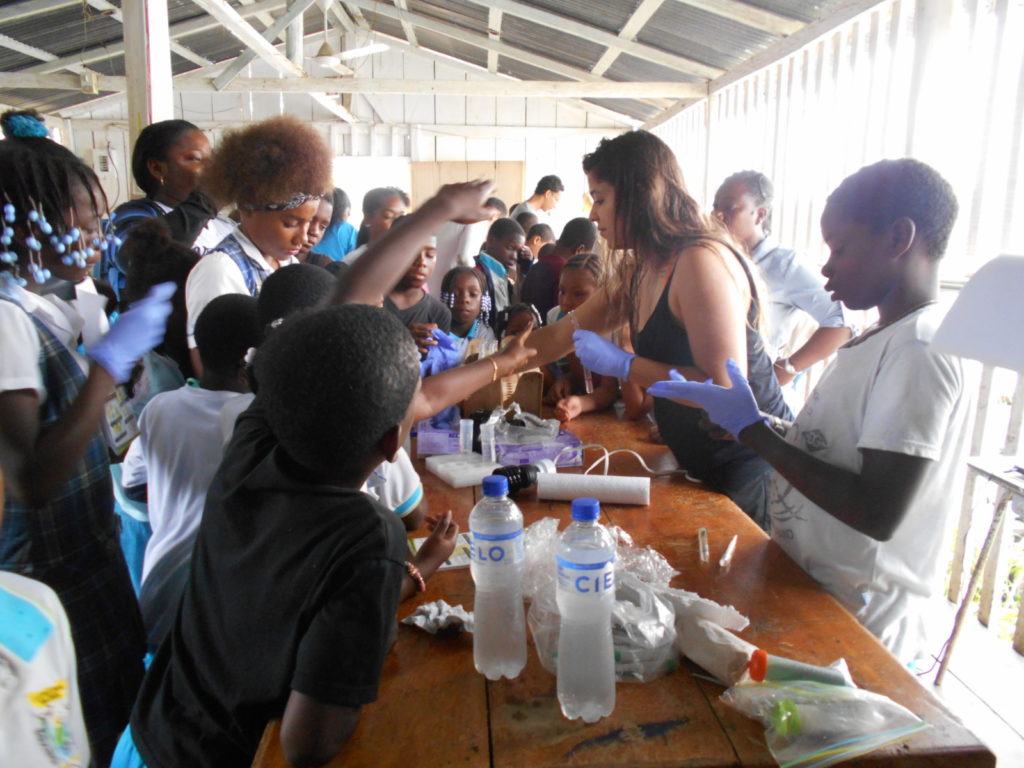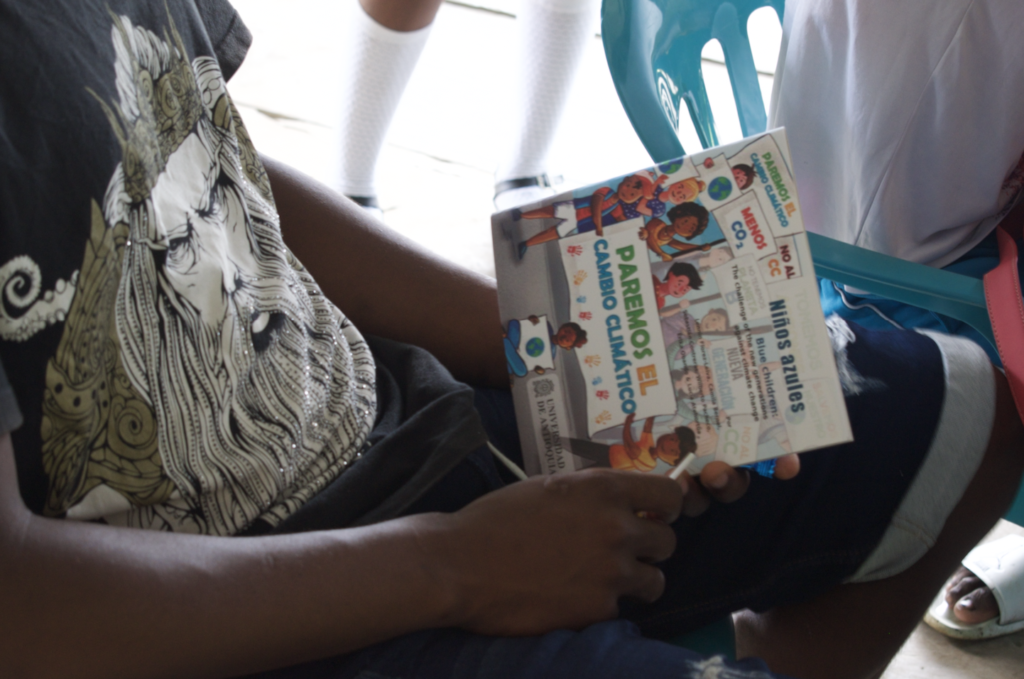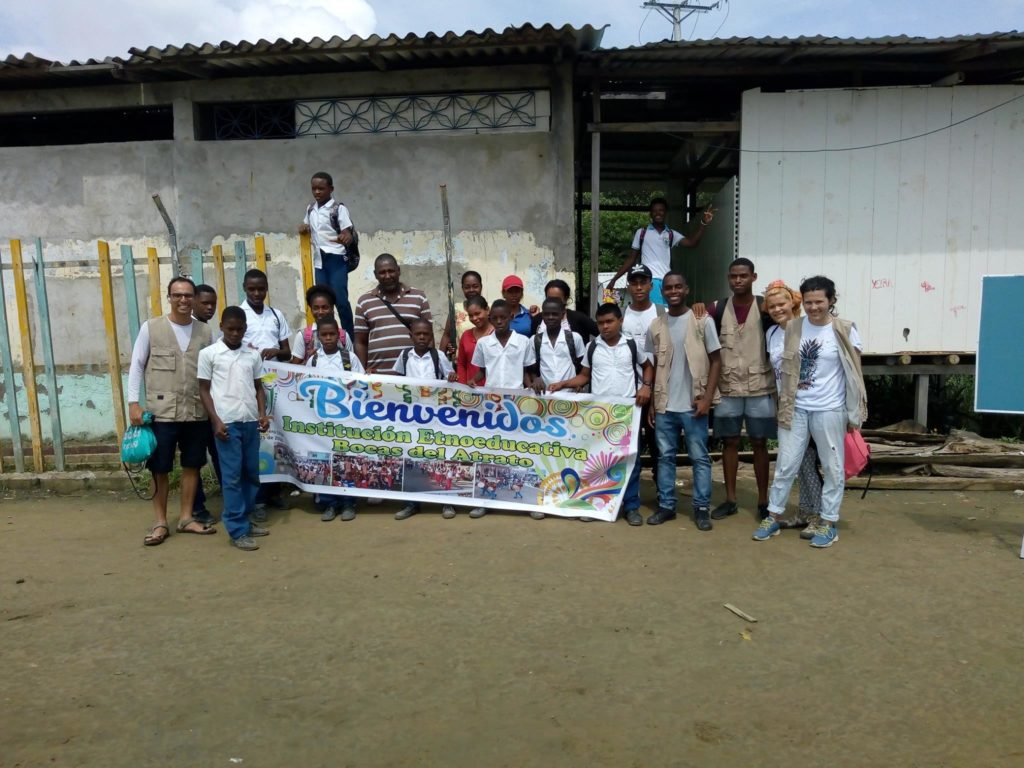
Understanding how our environment is changing under a warmer climate will be one of the new challenges our children will face. Meanwhile, teachers are challenged to seek new pedagogical strategies for teaching climate change in the youngest, especially in rural communities, which are one of the most vulnerable to climate change impacts, as they lack resilience towards surviving extreme events.
Although in recent years have seen significant advances in teaching climate science to high school students of Colombian cities, students from rural communities are still devoid of basic education rights and by extension any knowledge about the ongoing climate crisis. The young generations from these marginalized societies face several challenges, such as difficult access to schools, scarce teaching staff, and poor teaching infrastructure (e.g. internet, latest curriculum, safe environments for all genders, and so on). Therefore, in addition to providing basic education for the rural population, spreading awareness about climate change is a big challenge.
The Blue Children project (in Spanish “Niños Azules: El desafío de las nuevas generaciones ante el cambio climático) was born with the goal to raise awareness among children and youth from ethnic rural communities about their environment and the developing climate emergency so that they can generate local actions to adapt and mitigate the tentative climate change risks. The project therefore focuses on the educational sector in an environmental context, contributing to social innovation in curricular and pedagogical processes. Nevertheless, teaching of traditional and indigenous knowledge will be merged with the science of climate change (Figure 1).
From 2019-2020, our research group in Ocean, Climate and Environment (OCE) from the University of Antioquia in Colombia worked with 100 young students of a rural population located in Bocas del Atrato (Region of Urabá – Northern Colombia; Figure 2). Under a warming climate, these populations are highly vulnerable to sea-level rise and to extreme events such as river floods, storm runoffs, and other hazards. Hence, by educating the whole community, especially students, we hope to motivate them to explore new forms of adaptability, for example, solutions based on nature (e.g use of mangroves to solve erosive processes and floods). This is crucial since these settlements by 80% coverage of mangrove forests, which can help mitigate the impact of floods in nearby rivers such as the Atrato, which is one of the largest rivers in Colombia. The region of Urabá, which is surrounded by the Caribbean Sea has rich marine resources, it would benefit a lot if its population learns about its environment and dangers from climate change.

Figure 2. Population of Bocas del Atrato, located in northern Colombia (credit OCE research group).
The University of Antioquia-Colombia approached communities of this region in the north of the country in order to boost the academic and cultural exchange. The blue children project was a co-project between two academic and social communities for the social appropriation of knowledge through education (Figure 3). In addition, the knowledge acquired was bidirectional by valuing the traditional knowledge of local schools and communities on the one hand and academic knowledge on the other hand. Inside the university, this project also helped to re-organize some socio-cultural and educational paradigms. One of them was the question whether it is possible to reach areas far from the cities and at the same time provide learning experiences of the highest level to local students. In addition, we wanted to test if teenagers and children could be interlocutors for other adjacent communities concerning environmental education. Further, the project addressed several issues of climate change using traditional tools such as lectures, workshops, and some activities of the laboratory.

Figure 3. Children on a lab day learning about climate change (credit OCE research group).
The students receive intensive environmental training through playful ways to learn about mangrove forests and their protection, marine resources, and the importance of sustainable fishing, seawater quality, recycling, but also in sea level rise, extreme events, global warming, atmospheric and ocean pollution, solar radiation among many other topics. Further, addressed from the reading of scientific articles, we designed new technologies such as low-cost UV warning signal – solar lights also known in Spanish as “SOLMÁFOROS” (Instruments used for measuring ultraviolet radiation), which use optical sensors and UV filters, revealing the intensity of UV radiation through colors, like a solar traffic light. With this, we teach children to make direct and real-time measurements of an important factor such as UV radiation. Among some results, it is highlighted that the solar radiation that arrives is high. The solmáforos stimulated the scientific curiosity in our students but also promoted skincare habits by using sunscreen, long-sleeved shirts, a cap, but most importantly, to avoid sun exposure when UV levels are highest.
Some relevant results of the project were:
(1) Teaching the benefits of new low-cost technologies that allowed rural communities to measure solar radiation.
(2) Both teachers and students learned through workshops and laboratories about the theory of climate change.
(3) Create knowledge through their culture, traditions and worldviews.
(4) Both groups of students participated in world oceans day, where they showed their results of the project.
(5) The publication of a storybook about our blue children and their fight against climate change (Figure 4).

Figure 4. A blue child holding the storybook of the project (credit OCE research group).
Undoubtedly, the greater purpose of this project is to empower new generations of Bocas del Atrato to take on climate action, by being aware of their important role as environmental protectors in their community, but also, by implementing more sustainable actions that help mitigate the effect of climate change on their communities. We think of the Niños Azules as little superheroes ready to fight the climate crisis. They wear an invisible cape on their backs, colored blue like the ocean that surrounds them. This is why they are the blue children.
Finally, the blue children project will continue as an outreach project of the university, trying to expand to other regions. We are committed to look for a way to educate our children about climate change (Figure 5). More details about this project can be found here.

Figure 5. Photos show the integration of the work team of the school and the university in the project (credit OCE research group).

